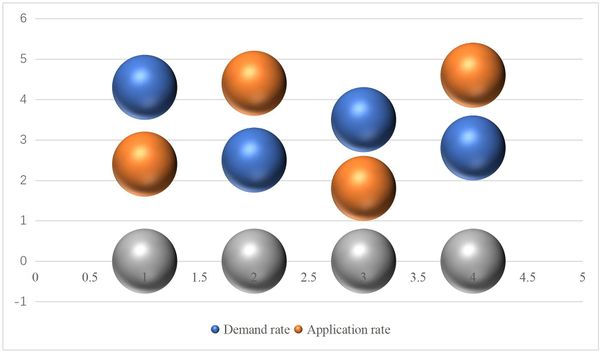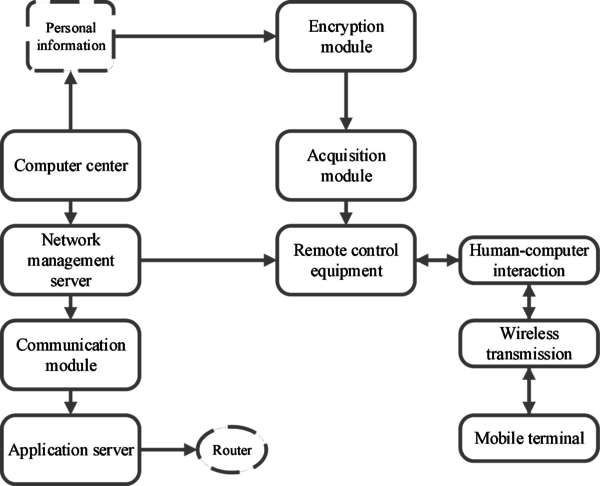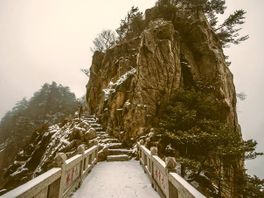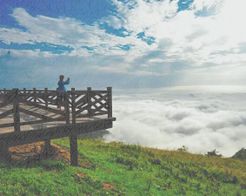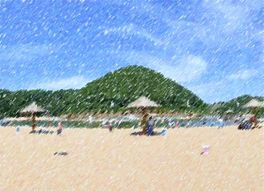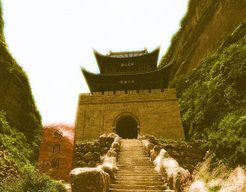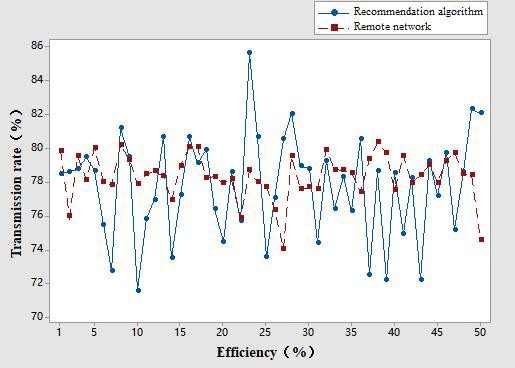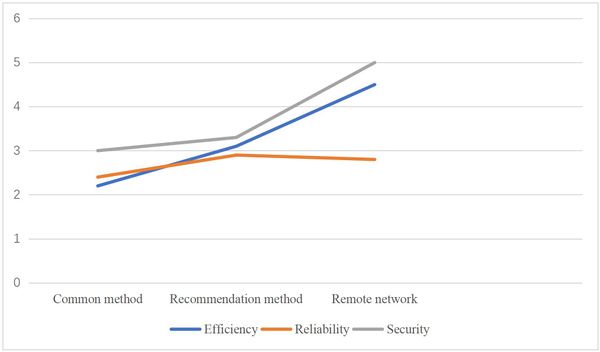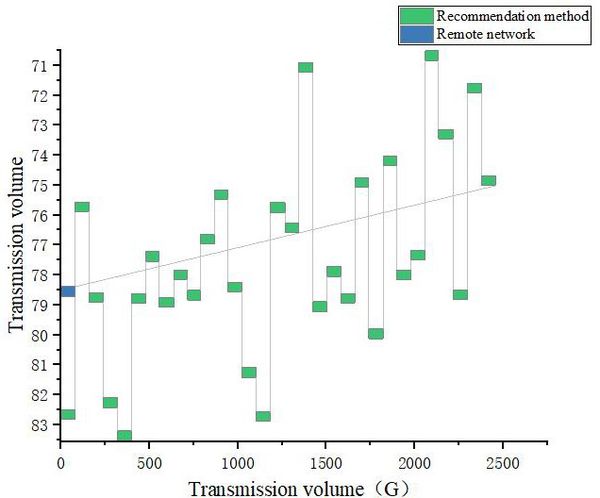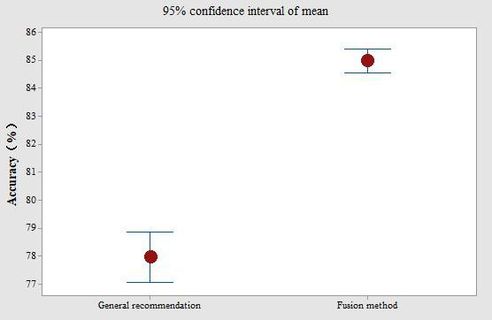Abstract
Project recommendation plays an important role in tourism management. It can not only promote the overall development of tourism, but also improve the satisfaction of tourists. However, in the process of tourism recommendation, there are some problems, such as insufficient personalized recommendation, low satisfaction with recommendation, inaccurate recommendation and so on. Therefore, this paper proposes a personalized tourism recommendation algorithm based on remote network control technology, which classifies the tourism needs of different groups and summarizes the data. On this basis, the tourism resources database is constructed, and the tourism resources are numbered. Combined with map list, real-time location of tourists, weather conditions, traffic conditions and other information, it provides tourists with more accurate and practical tourism recommendation services. Finally, through remote network control technology, the matching of tourism resources and demand can be realized, and the accurate transmission of personalized recommendation data can be ensured, and the recommendation algorithm can be promoted. The research results show that under the remote network control technology, personalized recommendation algorithm can improve the matching rate of all tourism resources, realize the rational development of tourism resources, and meet various needs of tourists.
Keywords: remote network control; Data transmission; Tourism resources; Personalized recommendation; Algorithm
1. Introduction
Remote network control technology is a kind of remote management technology based on network[1]. It can realize the control and management of remote equipment through network connection[2], realize the processing of massive data[3], and greatly improve the effective transmission of tourism resources in different regions[4]. However, in the process of remote network data transmission, there are often problems such as complex data types and large amount of data[5], which affect the characteristic analysis of tourism resources[6]. Therefore, this paper
integrates tourism personalized recommendation algorithm with remote network control technology[7], analyzes the characteristics of tourism resources in different regions, extracts the key values, and matches them better. The results are shown in Figure 1.
Fig. 1 Application scope of remote network control technology
Remote network control technology is widely used, such as smart home, intelligent medical care, intelligent transportation and other fields[8]. In the field of tourism, remote network control technology can be used for intelligent management and personalized service of scenic spots[9], realize intelligent control and personalized recommendation of tourism products, and improve tourism experience and service quality[10]. On the premise of comprehensive utilization of tourism resources and stable network communication[11], the multi-terminal and multi-channel transmission of information dissemination is realized[12], and the loss rate of information dissemination is reduced. Therefore, according to the characteristics of regional tourism resources[13], the remote network control technology is analyzed, and the analysis situation is shown in Table 2.
Table 1. Basic Analysis of Remote Network Control Technology (Unit:%)
| Indicators | Analysis effect | Loss rate |
| Transmission efficiency | 71.63 | 0.79 |
| Terminal debugging | 73.68 | 0.73 |
| Link handover | 80.49 | 1.08 |
| Transmission volume | 76.45 | 1.16 |
The communication process of remote network control technology is shown in Figure 1.
Fig. 2 Transmission process of tourism resources data under remote network control
Data transmission of remote network control technology refers to the process of sending commands [14], data and other information from the control terminal to the controlled remote equipment through the network, and returning response information from the remote equipment. It has the advantages of high utilization rate of control terminal and quantitative transmission[15], and is combined with personalized tourism recommendation algorithm to simplify the recognition process of feature data and realize the effective dissemination of feature data. At the same time, the characteristics of tourism resources are analyzed to verify the effect of remote network control technology and data integrity. Experiments show that personalized travel recommendation algorithm can combine tourists' personal preferences, hobbies and other factors, and simplify the data dimension and complexity of wireless transmission. The remote network control technology and personalized tourism recommendation algorithm are applied to the characteristic analysis of tourism resources, and the similarities and differences of tourism resources in different regions are compared. In the process of analyzing the characteristics of tourism resources, we should pay attention to the transmission effect, so we should choose the control terminal to achieve the maximum transmission efficiency. The control endpoint selection process is shown in Table 2.
Table 2. Selection effect of control endpoint of remote network control technology (unit%)
| Content | Control endpoint | Controlled endpoint |
| Real-time location | 74.90 | 73.01 |
| Weather conditions | 76.86 | 76.49 |
| Traffic conditions | 77.32 | 77.40 |
From the description in Table 2, it can be seen that the remote network control technology is selected independently to carry out the server and forwarder according to the amount of data transmitted. Although it can transmit tourism resource information quickly, it can't identify, classify, mine and eliminate characteristic data, so it is difficult to generalize and analyze personalized tourism recommendation, and at the same time, it should consider the adjustment of various parameters, so it should be supplemented by personalized tourism recommendation algorithm.
2. Related concepts
2.1 Characteristic Identification of Tourism Resources in Different Regions
The feature recognition of tourism resources mainly starts from natural landscape, cultural landscape, tourism facilities, special food and tourism activities. According to the historical behavior and preference of tourists, personalized tourism recommendation algorithm reduces the feature index of tourism resources and increases the correlation, influence and growth index in different types of tourism resources feature groups. Comprehensive application of tourism resource feature recognition algorithm and recommendation algorithm can reduce network bandwidth and realize massive data transmission of tourism resource features. Recommend tourism services that best meet individual needs for tourists. According to the demand of tourists, the obtained tourism resources data can be selected for frequency band matching, point selection, sending volume setting, transmission speed and other parameters. The specific transmission process is as follows.
Data collection of tourism resources: Landscape data is xij , tourism facilities data is y ,
traditional food data is a , historical behavior data is
H ( pij ) and personalized characteristics
is m ax . Data collection of tourism resources is shown in Formula (1).
The data collection process of tourism resources is as follows: const travelRegex = /^ (? =. *[A-Za-z]) (? =. *\d) [A-Za-z\d] {6,} $/.
Example usage
const resource1 = "abc123"; // Conforming to regular expressions const resource2 = "abc"; // Do not conform to regular expressions const resource3 = "123456"; // Do not conform to regular expressions if (travelRegex.test(resource1)) {
console.log("Resources meet the requirements");
} else {
console.log("Resources do not meet requirements");
}
if (travelRegex.test(resource2)) { console.log("Resources meet the requirements");
} else {
console.log("Resources do not meet requirements");
}
if (travelRegex.test(resource3)) { console.log("Resources meet the requirements");
} else {
console.log("Resources do not meet requirements");
}
By the above programming code, the matching degree of tourism resources can be reflected,
and the selection of remote network transmission can be carried out according to the characteristics, so as to improve the transmission efficiency of characteristics.
Ranking of tourism resources indicators: Landscape data is yi , tourism facilities data is d ,
historical behavior data is τi , personalized recommendation method is ranking of tourism resources indicators is shown in Formula (2):
K ( D ¸çûz!? xi )
, and the
K (D ¸çûz!? xi ) ¸çûz!? ∏τi ¸çûz!? yi ¸çûz!? d
(2)
The ranking process of tourism resources indicators is as follows: const sortingRegex = /^sort:(asc|desc); by:([A-Za-z] +) $/.
const sorting1 = "sort:asc;by:price"; const sorting2 = "sort:desc;by:ratings"; const sorting3 = "by:location;sort:asc";
const sorting1Match = sorting1.match(sortingRegex); if (sorting1Match) {
const direction = sorting1Match ; const column = sorting1Match ; else {
console.log.
}
Remote network control technology for the transmission of tourism resources data: wireless
transmission point is
n , point transfer function is di , remote network transfer function of
characteristic data is J (xi ) , and the processing process of personalized tourism recommendation algorithm is shown in Formula (3).
J ( x ) ¸çûz!? k ∑ μf n ¸çûz!? d
(3)
3. Tourism resource transmission process based on personalized tourism recommendation algorithm
3.1 Remote Network Transmission and Processing of Tourism Resources
The characteristic data of tourism resources and personalized recommendation content show cross changes, and the user's personal information will be generated when collecting the user's preference and historical behavior data, so it is necessary to encrypt the user's personal information data to determine the key content and the relevance of the content. In addition, because the occupancy and forwarding delay of mobile communication terminals have great influence on the transmission of network data, it is necessary to eliminate irrelevant data and simplify the processing. In order to carry out personalized tourism recommendation analysis more reasonably, it is necessary to select the optimal communication terminal point and forwarding point, and the processing results are shown in Table 3.
Table 3. Selection rate of tourism resources communication terminal points
| Transmission content
Type of data |
Point number | Scenic spots | Tourist facilities | Activity content | Selection rate |
| Tourism information | 4 | 66.46 | 66.47 | 68.58 | 88.29 |
| 10 | 61.49 | 67.77 | 67.88 | 82.09 | |
| 28 | 63.47 | 64.75 | 65.84 | 83.51 | |
| 12 | 64.95 | 66.40 | 66.80 | 84.44 | |
| 9 | 66.49 | 64.55 | 67.62 | 83.73 | |
| User information | 18 | 69.36 | 65.45 | 62.76 | 82.38 |
| 9 | 62.64 | 70.21 | 64.56 | 85.22 | |
| 2 | 64.31 | 68.82 | 65.74 | 83.43 | |
| 28 | 66.74 | 67.83 | 63.44 | 88.31 | |
| 26 | 67.42 | 66.85 | 65.40 | 84.06 | |
| Personalized recommendation | 6 | 68.44 | 67.45 | 66.63 | 83.31 |
| 27 | 66.11 | 67.54 | 67.68 | 85.87 | |
| 8 | 66.76 | 65.91 | 67.03 | 83.34 | |
| 12 | 68.43 | 64.37 | 68.42 | 82.56 | |
| 26 | 64.83 | 63.44 | 64.49 | 76.95 |
From the identification of tourism information data, user information data and personalized recommendation data in Table 3, it can be seen that the transmission integrity of scenic spots, tourism facilities and tourism activities is good, indicating that the points of each communication terminal are running well.
- 3.2 Individualized treatment of tourism resources
Personalize the data in Table 3, and preprocess each classification item with recommendation algorithm, and the results are shown in Table 4.
Table 4. Pretreatment of recommendation algorithm for each classification item
| Test
Preprocessingitem number |
Natural landscape | Humanistic landscape | Tourist facilities | Activity content |
| 14 | 0.6361 | 0.2377 | 0.4530 | 0.8725 |
| 20 | 0.2641 | 0.6132 | 0.9813 | 0.6544 |
| 26 | 0.4965 | 0.2400 | 0.4110 | 0.3444 |
| 2 | 0.1254 | 0.6507 | 0.4037 | 0.2678 |
| 17 | 0.7635 | 0.2030 | 0.6944 | 0.8701 |
| 12 | 0.0102 | 0.3183 | 0.6496 | 0.7202 |
| 28 | 0.1279 | 0.3588 | 0.5364 | 0.8150 |
| 26 | 0.3506 | 0.5265 | 0.6731 | 0.4624 |
| 9 | 0.0596 | 1.0308 | 0.8817 | 0.1424 |
| 28 | 0.3838 | 0.5309 | 0.5324 | 0.7936 |
| 15 | 0.5081 | 0.3283 | 0.5958 | 0.6041 |
| 3 | 0.5645 | 0.3998 | 0.7053 | 0.3021 |
| 2 | 0.1656 | 0.5514 | 0.7070 | 0.1657 |
| 25 | 0.0651 | 0.8571 | 0.1013 | 0.4925 |
| 30 | 0.5554 | 0.3484 | 0.7239 | 0.4638 |
According to the data in Table 4, the eigenvalues in the preprocessing of personalized recommendation algorithm are all < 1, which shows that the preprocessing results have corresponding eigenvalues. And indirectly explained in the personalized recommendation algorithm processing, the classification of the eigenvalues exist, there is no abnormal value, can meet the requirements of remote network control technology transmission, with a larger channel width, and can achieve the visualization of CDMA system. With the increase of wireless transmission time between communication terminals, the characteristics of tourism resources are obviously different, and the complexity of natural language in data is large. The complexity and access degree of data in transmission between communication terminals are improved, which needs further simplification.
4. Tourism case based on personalized tourism recommendation algorithm
4.1 Application of Remote Network Control Technology
This paper mainly studies personalized tourism recommendation algorithm based on remote network control technology. Mainly from the data collection, data preprocessing, feature selection, recommendation services and other aspects of analysis. The hardware conditions include: servers, routers, switches, network cards, built-in hard disks, external hard disks, network storage devices, etc. The specific conditions are shown in Table 5.
Table 5. Transmission conditions of remote network control technology (unit%)
| Parameter | Transmission efficiency | Transmission volume |
| Data acquisition | 88.88 | 87.52 |
| Data preprocessing | 81.07 | 86.63 |
| Feature selection | 81.66 | 86.42 |
| Referral service | 81.73 | 84.79 |
The sampling effect of remote network control technology is shown in Figure 3.
Fig. 3 Sampling effect of different scenic spots
Figure 3 shows the actual display effects of different scenic spots. In order to verify the effectiveness of the personalized tourism recommendation algorithm based on remote network control technology proposed in this paper, we have carried out some experiments. The experimental data was collected from a tourism website, including personal information, historical behavior, real-time location and other data of tourists. Firstly, the collected data are cleaned and preprocessed, and the features are selected. In the feature selection, we select the features related to personalized tourism recommendation, including tourists' historical behavior, real-time location, weather conditions, traffic conditions and other basic factors for feature analysis. The specific data is shown in Table 6.
| Analysis content | Research direction | Analysis effect | Relevance |
| User information | Preferences | 67.48 | 66.84 |
| Historical behavior | 64.23 | 69.17 | |
| Real-time location | 65.42 | 67.18 | |
| Tourism information | Scenic spots | 66.53 | 66.12 |
| History and culture | 65.23 | 68.71 | |
| Characteristic amorous feelings | 64.51 | 70.62 |
| Traffic | 66.32 | 66.24 |
| Route | 66.15 | 65.77 |
| Catering | 66.47 | 69.36 |
| Accommodation | 63.43 | 66.97 |
| Experience activity | 64.44 | 65.25 |
| Shopping place | 68.05 | 65.98 |
| Characteristic merchandise | 65.40 | 64.98 |
| Medical rescue | 65.25 | 66.86 |
4.2 Individualized Extraction Process of Tourism Resources
The personalized tourism recommendation model is established through machine learning and deep learning algorithm, and the model is trained and optimized, and the model is evaluated and compared, which can deeply analyze the effect of personalized recommendation service and the specific implementation. The specific identification results are shown in Table 7.
Table 7. Individualized extraction of tourism resources
Recognition method Content indicator Degree of optimization
Content feature analysis Scenic spots 83.28
Catering 85.16
Accommodation 85.10
Traffic route 86.14
History and culture 86.31
Characteristic amorous feelings 81.73
Experience activity 84.80
Shopping place 83.37
Characteristic merchandise 85.05
Medical rescue 84.87
Personalized extraction Scenic spots 84.09
Catering 84.20
Accommodation 86.66
Traffic route 80.93
History and culture 86.11
Characteristic amorous feelings 83.73
Experience activity 82.38
Shopping place 84.44
Characteristic merchandise 85.22
Medical rescue 83.43
The feature extraction results in Table 7 show that the established model provides personalized tourism recommendation service for tourists, which has good effect and optimization rate, and can provide tourists with personalized tourism recommendation service. The change process of dynamic characteristics of tourism resources is shown in Figure 4.
Fig. 4 Judgment process of dynamic characteristics of tourism resources
As can be seen from Fig. 4, tourism resources are divided into static characteristics and dynamic characteristics. In the process of judging tourism resources characteristics, the dynamic characteristics can reach more than 50%, and the data continues to increase. The above problems further show that personalized recommendation algorithm is needed to simplify the data transmission of tourism resources, improve the data transmission rate of remote network control technology, reduce the occupancy rate of servers, and realize the efficiency of personalized recommendation service.
4.3 Compatibility and Security of Remote Network Control Technology
In the transmission process of remote network control technology, the compatibility between tourism resource data and user information, wireless transmission rate and the security of user personal information should be considered. The specific results are shown in Table 8.
Table 8. Data Transfer Compatibility and Security
| Indicators | Content | Transmission
rate |
Key
content |
Compatibility | Security |
| Tourism information | Attractions
information |
83.37 | 84.71 | 83.43 | 87.93 |
| Route
information |
85.05 | 84.63 | 88.31 | 85.63 | |
| Traffic
information |
84.87 | 84.95 | 84.06 | 87.23 | |
| Accommodation
information |
84.09 | 86.26 | 83.31 | 84.23 | |
| User information | Personal
preferences |
84.20 | 85.09 | 85.87 | 86.88 |
| Historical | 86.66 | 85.34 | 83.34 | 86.04 |
| behavior | |||||
| Browse record | 80.93 | 85.54 | 82.56 | 85.69 | |
| Commentary
record |
86.11 | 86.69 | 76.95 | 85.74 |
The compatibility and security of the data in Table 8 is shown in Figure 5.
Fig. 5 Transmission effect of feature data
As can be seen from Fig. 5, in the remote network control technology, data transmission needs to be safe, reliable and efficient. In order to achieve secure data transmission, encryption technologies, such as SSL (Secure Sockets Layer) and TLS (Transport Layer Security), are usually used to ensure that data will not be stolen or tampered with during transmission. In addition, data transmission needs to ensure reliability to avoid data loss or error. Therefore, TCP protocol is usually used to ensure the reliability and integrity of data transmission. In addition, the personalized recommendation algorithm is used to simplify the data volume, so as to reduce the data transmission time and bandwidth occupation.
4.4 Effect of Remote Network Transmission Endpoint Selection
The analysis of tourism resource characteristics must use multiple terminal data extraction, real display, and comparison of different feature points to grasp the selection effect of feature points. The specific results are shown in Figure 8.
Figure 6. Endpoint selection effect of personalized recommendation analysis
As can be seen from Fig. 6, there is a big difference between the relay endpoint and the selected effect data, and the eigenvalue is quite different from the selected data, so the relay point can meet the actual requirements of relay transmission. In the process of transmission, the data interact in different directions to realize the bidirectional iterative transformation of data, and improve the iterative calculation speed and efficiency, and achieve the iterative calculation effect of data. The results show that the personalized recommendation algorithm can effectively promote the optimal allocation of tourism resources, and effectively improve the network matching ability and wireless transmission ability. Summarize the data in Figure 6 and get the following calculation results, as shown in Table 9
Table 9. Endpoint selection effect of remote network (unit%)
| Endpoint | Parameter | Endpoint occupancy rate | Bandwidth
occupancy |
Selection
effect |
| Control endpoint | Tourism
information |
84.44 | 86.64 | 86.04 |
| User information | 83.73 | 88.83 | 85.69 | |
| Personalized
recommendation |
82.38 | 85.27 | 85.74 | |
| Controlled endpoint | Tourism
information |
85.22 | 87.09 | 86.28 |
| User information | 83.43 | 87.93 | 85.26 | |
| Personalized | 88.31 | 85.63 | 87.52 |
| recommendation |
The results of control endpoint and controlled endpoint are identified, and the results show that in all sampling identification, the packet collection rate of tourism information, user information and personalized recommendation information is higher than 78%, the receiving selection effect is higher than 85%, and the gradual growth probability is higher than 84%. It can be seen that in different sampling results, the received selection effect, recovery rate and actual presentation results are different from those of selection recommendation, and their differences are small, which further shows that remote network control technology can realize the mutual transmission of tourism information and user information data, and change for the increase or decrease of tourism resource characteristic data, and can provide remote network support for personalized tourism recommendation.
4.5 Accuracy of personalized travel recommendation
The diversity of tourism resources, the presentation of landscape and history and culture need high-accuracy network parameters as a guarantee to judge the accuracy of personalized tourism recommendation algorithm. The results are shown in Figure 9.
Figure 9. Transmission accuracy of personalized travel recommendation
It can be seen from Fig. 9 that the transmission accuracy of personalized tourism recommendation algorithm is higher than that of ordinary recommendation methods, and the transmission results of various tourism resource data are less different from the actual tourism experience, which shows that remote network control technology transmission can accurately complete feature extraction and provide comprehensive support for personalized tourism recommendation. The results are shown in Table 7.
Table 7. Accuracy rate of tourism resource feature recognition
| Sample size | Processing results of personalized tourism
recommendation algorithm |
Transmission results of remote network
control technology | ||
| Tourism resources | Tourism experience | Tourism resources | Tourism experience | |
| 3 | 81.53 | 87.69 | 87.32 | 86.10 |
| 5 | 84.36 | 83.88 | 85.95 | 80.32 |
| 4 | 83.72 | 84.86 | 84.48 | 84.56 |
| 10 | 81.81 | 83.89 | 80.52 | 85.83 |
| 8 | 87.10 | 88.96 | 84.43 | 88.20 |
| 12 | 84.89 | 83.12 | 79.87 | 85.42 |
| 9 | 85.74 | 85.53 | 84.02 | 86.94 |
| 11 | 86.55 | 83.69 | 82.80 | 82.63 |
| 9 | 84.13 | 84.69 | 83.30 | 86.84 |
From the recognition process in Fig. 9, it can be seen that the recognition of tourism resources characteristics is relatively high, and the transmission rate of remote network control technology is more than 75%, which is mainly due to the extraction of tourism resources characteristic data by recommendation algorithm, which reduces the complexity of data in remote network control technology, and further proves that the transmission of remote network control technology can meet the actual requirements. Moreover, in the selection process between the control end and the controlled end, there is no abnormal interference, which shows that the transmission effect of tourism resources characteristics is ideal.
5. Conclusion
This paper presents a personalized tourism recommendation algorithm based on remote network control technology. The algorithm provides more accurate and practical tourism recommendation services for tourists by combining the matching values of tourism information and user information. Experiments show that the algorithm has good effect and accuracy, and can provide tourists with personalized travel recommendation services. In the future, we will continue to study and develop this algorithm to further improve the accuracy and real-time performance of recommendation. At the same time, we will also explore more data collection and processing methods, as well as more advanced machine learning and deep learning algorithms, so as to improve the transmission efficiency of remote network control technology and make greater contributions to the development of tourism recommendation field.
Funding
Doctoral Enhancement Plan of ZCST; The "13th Five Year Plan" of Guangdong Province on Educational Science, a special project for higher education science research in 2020(2020GXJK459); Guangdong University Youth Innovative Talents Project (Humanities and Social Sciences) in 2021(2021WQNCX117); Guangdong Higher Education Teaching Reform Project, Research and Practice on the Talent Training Mode of Events Economy and Management in Application-oriented Universities under the Concept of OBE ; Zhuhai philosophy and social science planning annual project in 2023(2023GJ094)
Data availability
All data generated or analysed during this study are included in this published article.
References
- [1] W. Bi, G. Wang, and M. Zhang, "Personalized Recommendation of Rural Tourism Based on Traffic Classification and User Data Analysis," Security and Communication Networks, Article vol. 2022, Mar 2022.
- [2] P. Chaudhary, P. Kiran, N. Kate, and S. Pandey, "Experiential tourism - role and application of micro-targeting in enhancing customer experience, engagement and loyalty," Journal of Information & Optimization Sciences, Article vol. 43, no. 6, pp. 1463-1473, Aug 2022.
- [3] L. Fan and W. Zhang, "Personalized Travel Recommendation Based on the Fusion of TGI and POI Algorithms," Wireless Communications & Mobile Computing, Article vol. 2022, Jan 2022.
- [4] X. Hu, "Optimization of Rural Smart Tourism Service Model with Internet of Things," Security and Communication Networks, Article vol. 2022, Jun 2022.
- [5] X. Huang, "Personalized Travel Route Recommendation Model of Intelligent Service Robot Using Deep Learning in Big Data Environment," Journal of Robotics, Article vol. 2022, Jan 2022.
- [6] Y.-T. Huang, L. Tzong-Ru, A. P. I. Goh, J.-H. Kuo, W.-Y. Lin, and S.-T. Qiu, "Post-COVID
wellness tourism: providing personalized health check packages through online-to-Offline services," Current Issues in Tourism, Article vol. 25, no. 24, pp. 3905-3912, Dec 2022.
- [7] T. A. Khubaev, I. E. Gagloeva, and Z. B. Tedeeva, "Functional Model and Architecture of a Single Digital Platform for Promoting the Tourism Potential of the North Caucasus Federal District in the Russian and International Markets," Automatic Documentation and Mathematical Linguistics, Article vol. 56, no. 6, pp. 295-305, Dec 2022.
- [8] Y. Lin and G. Hu, "Design and Communication of City Brand Image Based on Big Data and Personalized Recommendation System," Journal of Function Spaces, Article vol. 2022, Sep 2022.
- [9] J. Lu, "Personalized Recommendation Algorithm of Smart Tourism Based on Cross-Media Big Data and Neural Network," Computational Intelligence and Neuroscience, Article vol. 2022, Jun 2022.
- [10] P. Mantas, Z.-M. Ioannou, E. Viennas, G. Pavlidis, and E. Sakkopoulos, "Digital Gifts and Tourism Mementos: A Sustainable Approach," Sustainability, Article vol. 14, no. 1, Jan 2022.
- [11] X. Su, J. He, J. Ren, and J. Peng, "Personalized Chinese Tourism Recommendation Algorithm Based on Knowledge Graph," Applied Sciences-Basel, Article vol. 12, no. 20,pp.32,Oct 2022.
- [12] L. Wu, T. Gu, Z. Chen, P. Zeng, and Z. Liao, "Personalized day tour design for urban tourists with consideration to CO2 emissions," Chinese Journal of Population Resources and Environment, Article vol. 20, no. 3, pp. 237-244, Sep 2022.
- [13] Y. Xing, "Design and Implementation of Tourism Teaching System Based on Artificial Intelligence Technology," Computational Intelligence and Neuroscience, Article vol. 2022, Apr 2022.
- [14] X. Xu, L. Wang, S. Zhang, W. Li, and Q. Jiang, "Modelling and Optimization of Personalized Scenic Tourism Routes Based on Urgency," Applied Sciences-Basel, Article vol. 13, no. 4, Feb 2023.
- [15] L. Yun and Z. Luo, "Multisource Information Fusion Algorithm for Personalized Tourism Destination Recommendation," Mathematical Problems in Engineering, Article vol. 2022, Sep 2022.
Document information
Published on 14/10/23
Submitted on 06/10/23
Licence: CC BY-NC-SA license
Share this document
Keywords
claim authorship
Are you one of the authors of this document?
